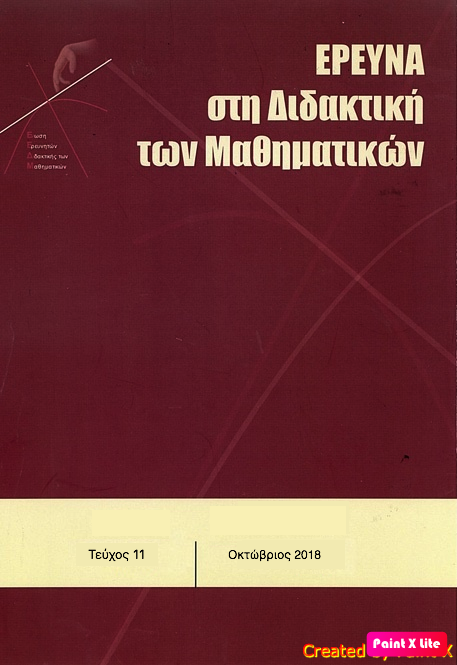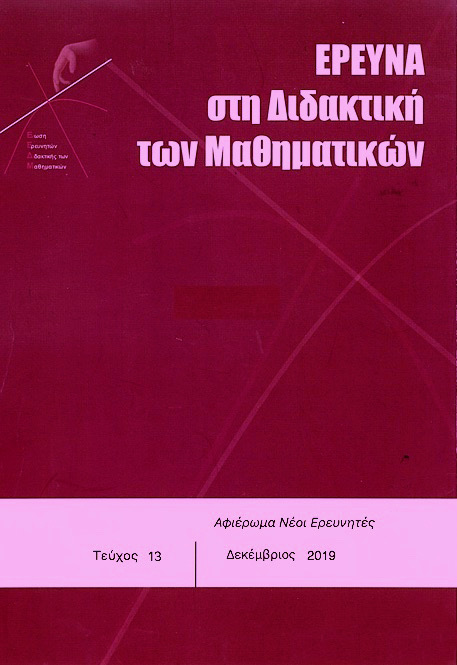ΤΑ ΓΡΑΜΜΑΤΑ-ΜΕΤΑΒΛΗΤΕΣ: ΠΩΣ ΤΑ ΚΑΤΑΝΟΟΥΝ ΟΙ ΜΑΘΗΤΕΣ ΚΑΙ ΠΩΣ ΕΜΦΑΝΙΖΟΝΤΑΙ ΣΤΑ ΒΙΒΛΙΑ ΜΑΘΗΜΑΤΙΚΩΝ ΤΟΥ ΓΥΜΝΑΣΙΟΥ

Περίληψη
Η παρούσα ερευνητική εργασία εστιάζει στην έννοια της μεταβλητής στα σχολικά μαθηματικά και αποτελείται από δυο μελέτες. Στη μελέτη Α΄ διερευνάται με ποιους τρόπους κατανοούν οι μαθητές του Γυμνασίου και της Α΄ Λυκείου τη χρήση των γραμμάτων ως μεταβλητών στις αλγεβρικές παραστάσεις και τι τιμές θεωρούν ότι αυτές μπορούν να πάρουν. Τα αποτελέσματα των ατομικών συνεντεύξεων έδειξαν ότι οι μαθητές αναγνώριζαν τα γράμματα ως σύμβολα που αναπαριστούσαν περισσότερους του ενός αριθμούς, αλλά ότι οι αριθμοί αυτοί ήταν κατά προτεραιότητα φυσικοί αριθμοί. Στη μελέτη Β΄ εξετάζεται με ποιες διαφορετικές μορφές εμφανίζονται τα γράμματα ως μεταβλητές στα σχολικά βιβλία των Μαθηματικών του Γυμνασίου και τι αριθμητικές τιμές τους αποδίδονται. Τα αποτελέσματα έδειξαν ότι στην πλειοψηφία τους τα γράμματα εμφανίζονταν ως σύμβολα που αναπαριστούσαν περισσότερους του ενός αριθμούς και ότι οι τιμές που τους αποδίδονταν ήταν μη-φυσικοί και φυσικοί αριθμοί σε ίδιο περίπου ποσοστό. Τα αποτελέσματα και των δυο μελετών συζητιούνται θεωρητικά και προτείνονται παιδαγωγικές εφαρμογές.
Λεπτομέρειες άρθρου
- Πώς να δημιουργήσετε Αναφορές
-
Δημητρακοπούλου (Styliani Dimitrakopoulou) Σ., & Χρήστου (Konstantinos Christou) Κ. (2018). ΤΑ ΓΡΑΜΜΑΤΑ-ΜΕΤΑΒΛΗΤΕΣ: ΠΩΣ ΤΑ ΚΑΤΑΝΟΟΥΝ ΟΙ ΜΑΘΗΤΕΣ ΚΑΙ ΠΩΣ ΕΜΦΑΝΙΖΟΝΤΑΙ ΣΤΑ ΒΙΒΛΙΑ ΜΑΘΗΜΑΤΙΚΩΝ ΤΟΥ ΓΥΜΝΑΣΙΟΥ. Έρευνα στη Διδακτική των Μαθηματικών, (11), 31–52. https://doi.org/10.12681/enedim.18938
- Ενότητα
- Άρθρα

Αυτή η εργασία είναι αδειοδοτημένη υπό το CC Αναφορά Δημιουργού 4.0.
Οι συγγραφείς των άρθρων που δημοσιεύονται στο περιοδικό διατηρούν τα δικαιώματα πνευματικής ιδιοκτησίας επί των άρθρων τους, δίνοντας στο περιοδικό το δικαίωμα της πρώτης δημοσίευσης. Άρθρα που δημοσιεύονται στο περιοδικό διατίθενται με άδεια Creative Commons BY και σύμφωνα με την άδεια μπορούν να χρησιμοποιούνται ελεύθερα, με αναφορά στο/στη συγγραφέα και στην πρώτη δημοσίευση.


